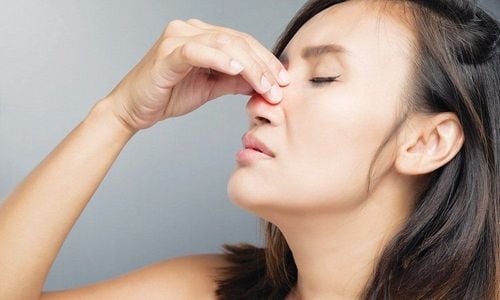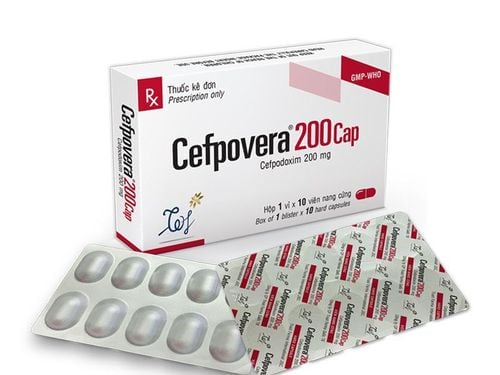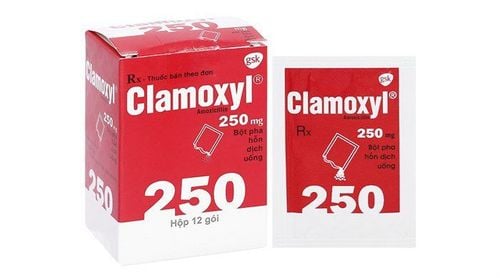This is an automatically translated article.
Inflammation of the eustachian tube separates the middle ear cavity from the outside environment, trapped air and creates a negative pressure that pulls the eardrum inward, along with the accumulation of fluid in the middle ear cavity, increasing the pressure. Patients often experience pain and hearing loss. A tubal catheterization is a tube-pumping procedure that helps open the eustachian tube.1. What is the eustachian tube?
The eustachian tube is a narrow tube that connects the back of the nose to the middle ear. In an adult it is about 3-4cm long, about 3mm in diameter, made up of 2/3 of the head is cartilage and the remaining 1/3 is bone. The eustachian tube runs in a slightly upward sloping direction and is normally filled with air. The eustachian tube is normally closed but opens when we swallow, yawn, or chew.The tympanic membrane has 3 main functions: to ventilate the middle ear, can help keep the air pressure equal on both sides of the eardrum, facilitate the normal functioning of the eardrum, and help drain secretions from the ear middle to the outside, protecting the middle ear from pathogens upstream from the nasopharynx. Several small muscles located at the back of the throat and roof of the mouth control the opening and closing of the Eustachian tube. Swallowing and yawning cause contractions of the muscles located at the back of the throat and help regulate the function of the Eustachian tube. Without the Eustachian tube, the middle ear cavity would be an isolated air sac, vulnerable to any changes in air pressure and reduced middle ear function.
Normally, the eustachian tube hole is closed, which helps prevent middle ear infections by secretions that are normally present at the back of the nose.
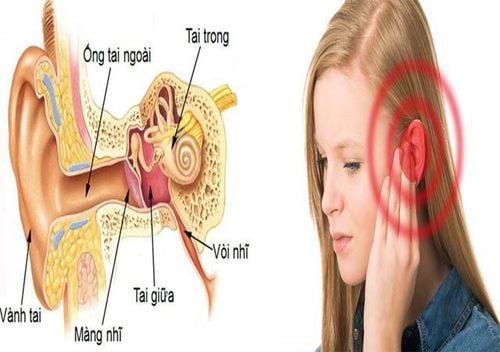
Thông vòi nhĩ là một thủ thuật bơm thông khí qua vòi giúp làm thông vòi nhĩ
2. Causes of eustachian tube inflammation
The most common cause is an upper respiratory tract infection. After the onset of the upper respiratory tract inflammatory process, allergic rhinitis causes swelling of the nasopharyngeal mucosa, in which the mucosa near the eustachian tube door also swells, blocking the eustachian tube, mucus and secretions accumulate.Some people are at higher risk of eustachian tube obstruction, such as:
Children : The eustachian tube is shorter, straighter, and more horizontal than the adult tube. This makes it easier for germs to reach the middle ear, and the eustachian tube is horizontal, making it difficult for fluid to drain out of the middle ear. In addition, children's immune systems are not fully developed. This makes it harder for them to fight off infections. In addition, children with Down syndrome are more likely to occur because the diameter of the tube is too small. The older the child, the better the function of the eustachian tube, so the rate of otitis media decreases. Smoking: Smoking damages the cilia (tiny hairs that sweep mucus from the middle ear to the back of the nose). This can cause mucus to collect in the eustachian tube. Obese people: Fat accumulation around the eustachian tube can lead to Eustachian tube dysfunction. People with allergies often increase mucus secretion, which can easily lead to blockage of the eustachian tube. The tonsils at the back of the nose near the eustachian tube act as a reservoir for bacteria, contributing to recurrent ear infections. Overgrowth of the tonsils that interfere with the eustachian tube opening can also occur, so removal of the tonsils is often recommended in children with chronic ear infections (chronic otitis media). Rarely, masses or tumors in the base of the skull or nasopharynx can lead to obstruction of the Eustachian tube.
3. Symptoms of tubal occlusion
Tubitis can cause a number of different symptoms, occurring together or individually. A feeling of fullness in the ear is probably the most common symptom.Some people describe it as a feeling of having water in the ear or a feeling of pressure. Sometimes, this is made worse by changes in air pressure, such as going up a hill in a car, through a tunnel in a train, or on an airplane (most often when the plane is landing). wing).
Other symptoms include:
Tinnitus , Ear pain. Young children may describe the tickling sensation as "tickling in the ear" or "tingling in the ear". Poor or muffled hearing. Loud or crackling noises in the ears. Poor balance or vague feeling of dizziness.
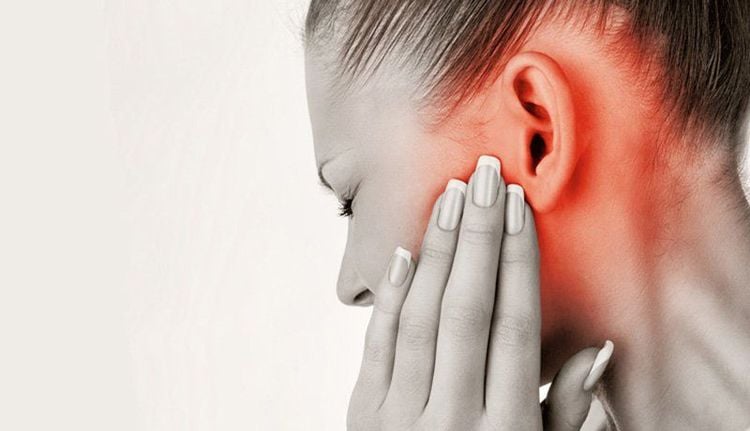
Cảm giác đầy trong tai là triệu chứng phổ biến nhất của viêm vòi nhĩ
4. Treatment of tubal occlusion
It is important to maintain the patency of the eustachian tube. Therefore, it is necessary to limit the incidence of ENT diseases. If you have these diseases, you need to treat them completely first. Depending on each specific case, the doctor will prescribe appropriate treatment such as: using antibiotics if there is an infection, anti-inflammatory, anti-congestive mucosal drugs to reduce swelling at the eustachian tube, using saline solution. reason to clean the nose.Any activity that promotes swallowing can help open the eustachian tube through the muscles in the back of the throat, such as chewing gum, drinking, or eating. Yawning is even more effective as it is a more powerful muscle stimulant.
The eustachian tube technique helps to treat eustachian tube blockage. Its principle is the procedure of pumping air through the eustachian tube to open the eustachian tube.
4.1 Self-communication method also known as Valsava maneuver This method is simple, easy to perform and does not cause additional damage. First, make sure your nose is clear and clear of fluid by using nasal vasoconstrictor drops and then blowing your nose thoroughly. If fluid remains in the eustachian tube and the nose is not open, pus will back up into the tympanic cavity through the eustachian tube, causing otitis media.
How to do it as follows: Take a deep breath, then close your mouth, squeeze your nose and exhale forcefully to force your breath out, because the nose is blocked, the compressed air will open the tympanic opening and escape to the tympanic cavity. We hear a "poc" sound because air pushes against the eardrum causing the eardrum to bulge out.
4.2 The method of using the rubber ball This method is usually done in adults. Have the patient take a sip of water and swallow only when directed by the doctor. Insert the rubber tube tip of the Politzer ball into the nostril on the side of the blocked ear canal tightly, the other nostril is closed by pressing the thumb against the wing of the nose. As soon as the patient swallows, we quickly squeeze the rubber ball, then air will be pushed into the tympanic cavity through the tympanic tube.
The principle of this method is to open the eustachian tube door, creating positive pressure in the nasopharynx while this cavity is completely separated from the oropharynx because the pharyngeal membrane closes when swallowing. At that time, the only way for air to escape is through the tympanic tube into the tympanic cavity.
4.3 Itard hard tube method Using a curved cotton stick soaked in 3-6% xylocaine numbs the nozzle for 5 - 10 minutes. Place the curved end of the Itard tube close to the floor of the nose, insert it into the nasal cavity in the upside down direction, then gently push the tube from front to back to the posterior wall of the pharynx, then retract the tube about 1.5cm and rotate the cannula 90 degrees upwards and outwards. . The tip of the pipe falls into the faucet door. Inject air through the tube and then withdraw the Itard tube in the opposite direction.
If this technique is performed under the endoscope, it is very easy, because the full catheter will certainly fit snugly at the nozzle. The air pressure used in this method will be relatively large and concentrated right at the nozzle, so it is easy to open the eustachian tube.
However, when performing it, you must be very careful or you will accidentally break the tympanic membrane when the air pressure is too strong to be out of control.
Like any procedure, some complications can occur such as bleeding, perforated eardrum or acute otitis media... But these complications are usually not dangerous and can be managed promptly.
To examine and treat ear, nose and throat problems, guests can go to the Ear - Nose - Throat specialist - Vinmec International General Hospital to register and be examined by a team of experienced doctors. The hospital has a system of modern and advanced medical equipment, possessing many of the best machines in the world, helping to detect many difficult and dangerous diseases in a short time, supporting the diagnosis and treatment. by the most effective doctor.
Thanks to the constantly improving medical quality, Vinmec has achieved many achievements and is trusted and appreciated by professionals as well as customers.
Please dial HOTLINE for more information or register for an appointment HERE. Download MyVinmec app to make appointments faster and to manage your bookings easily.




